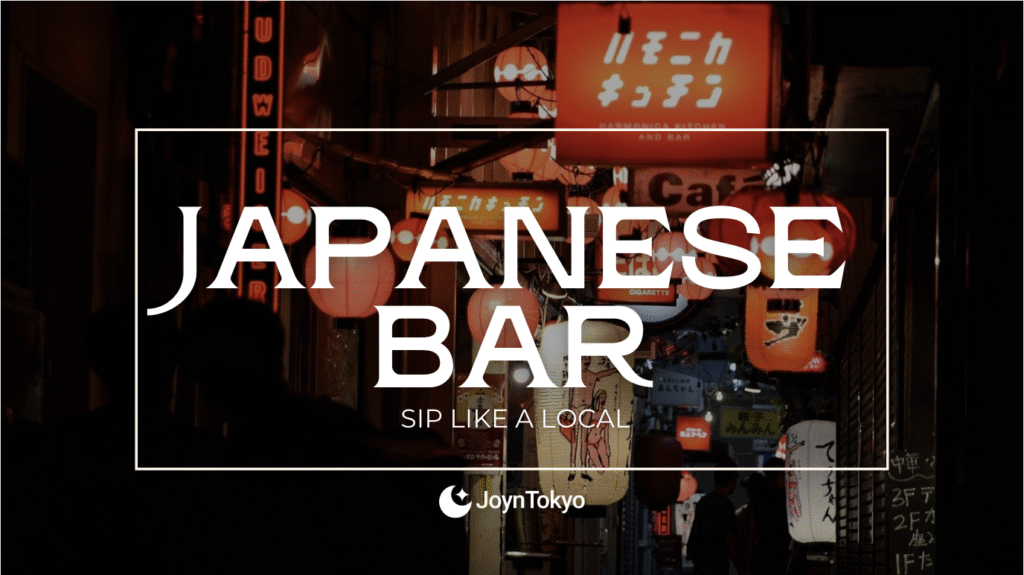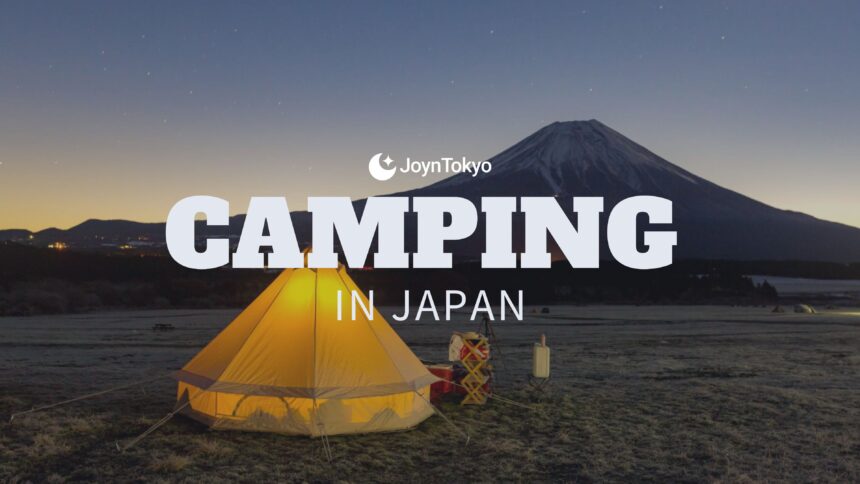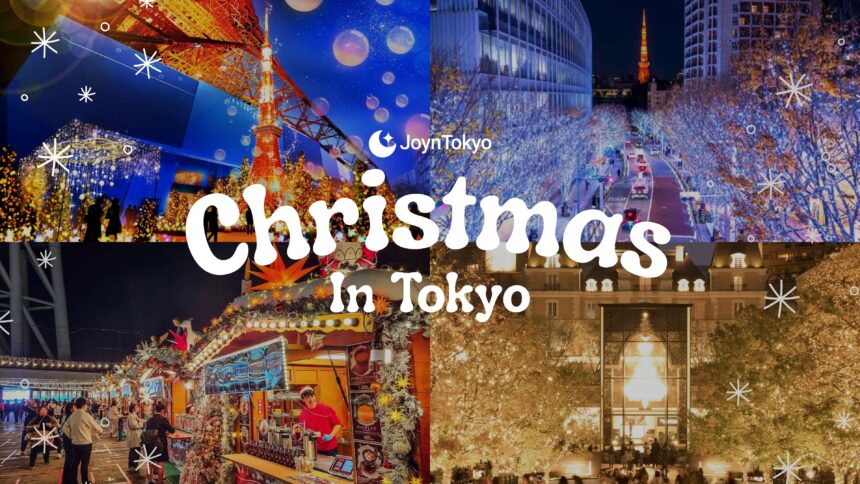The All-Japan Dance Calendar 2025
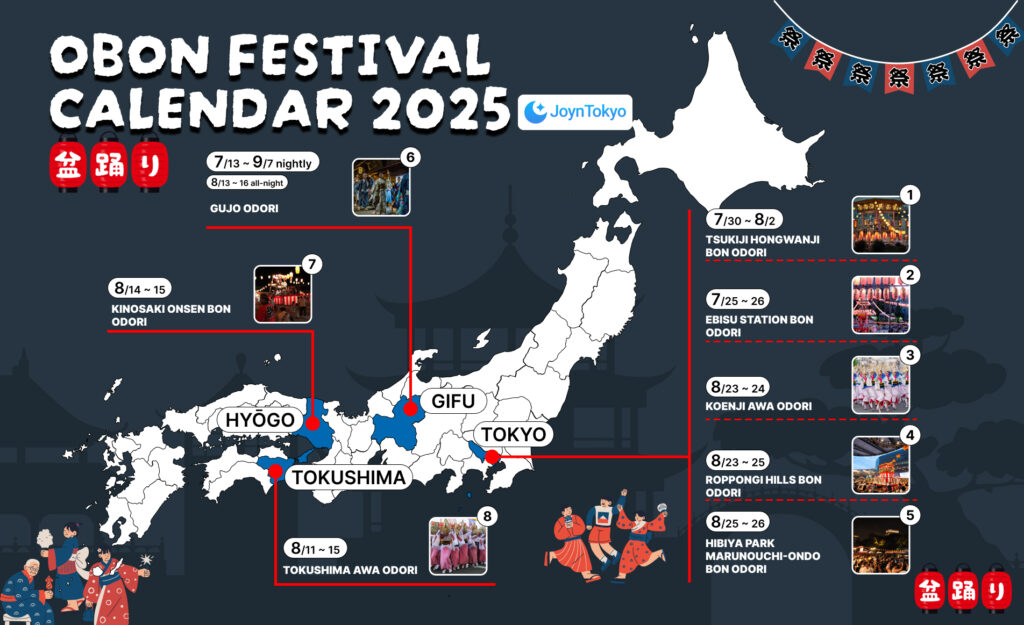
The Bon Odori dance is one of the most fun traditional pastimes in Japan, and during the Obon Festival, you can see it in person — or even join in! But before you slip into your dancing shoes, let us take you through the dates of some of the biggest and best Bon Odori in Japan. And remember, unless otherwise stated, all of these events are free!
Tokushima Awa Odori (Tokushima Pref.)
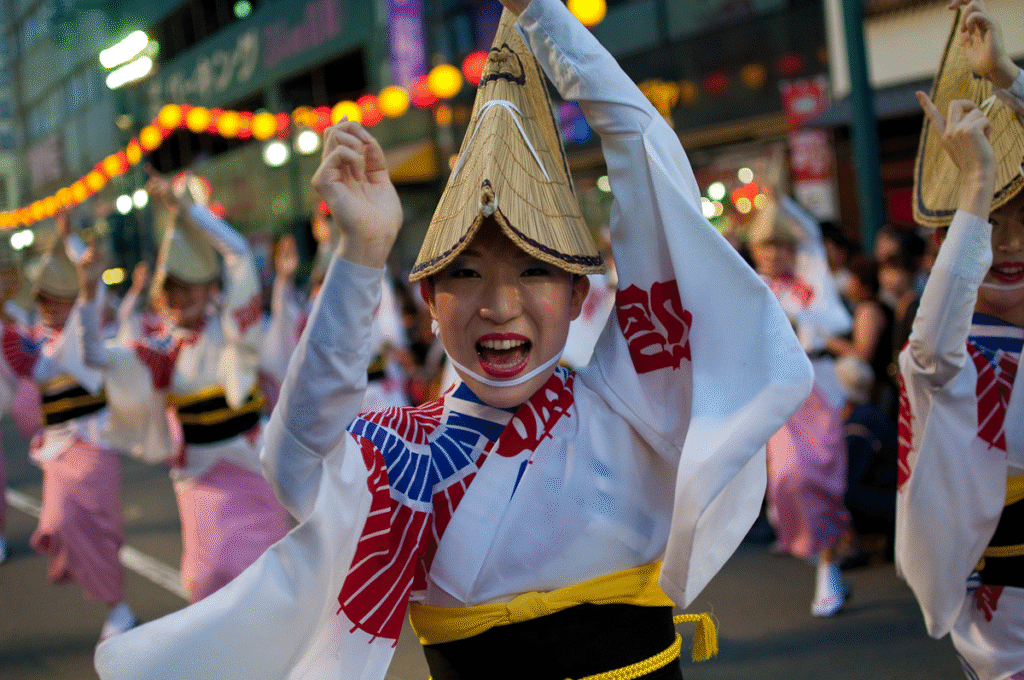
The country’s biggest Bon Odori, famous for its ten-thousand-strong “ren” troupes. Grandstand tickets on sale at prices starting from ¥2,000 sell out by June, but standing space downtown is free.
- When: Aug 11 to 15
- Official Website
- Map
Gujo Odori (Gujo-Hachiman, Gifu)
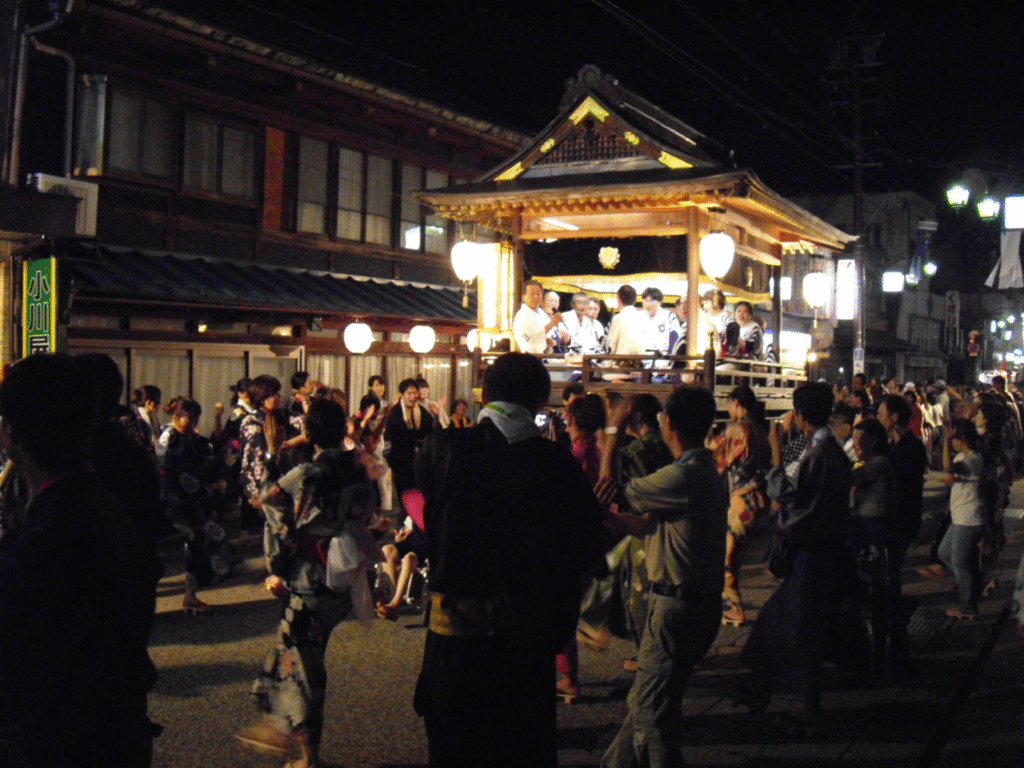
- When: nightly Jul 13 to Sep 7; all-night Aug 13 to 16
- Official Website
- Map
Listed on UNESCO’s Intangible Cultural Heritage list in 2022, this 31-night marathon features wooden‐clog percussion dances beside the Yoshida River — an all new kind of “river dance”!.
Tsukiji Hongwanji Bon Odori (Tokyo)
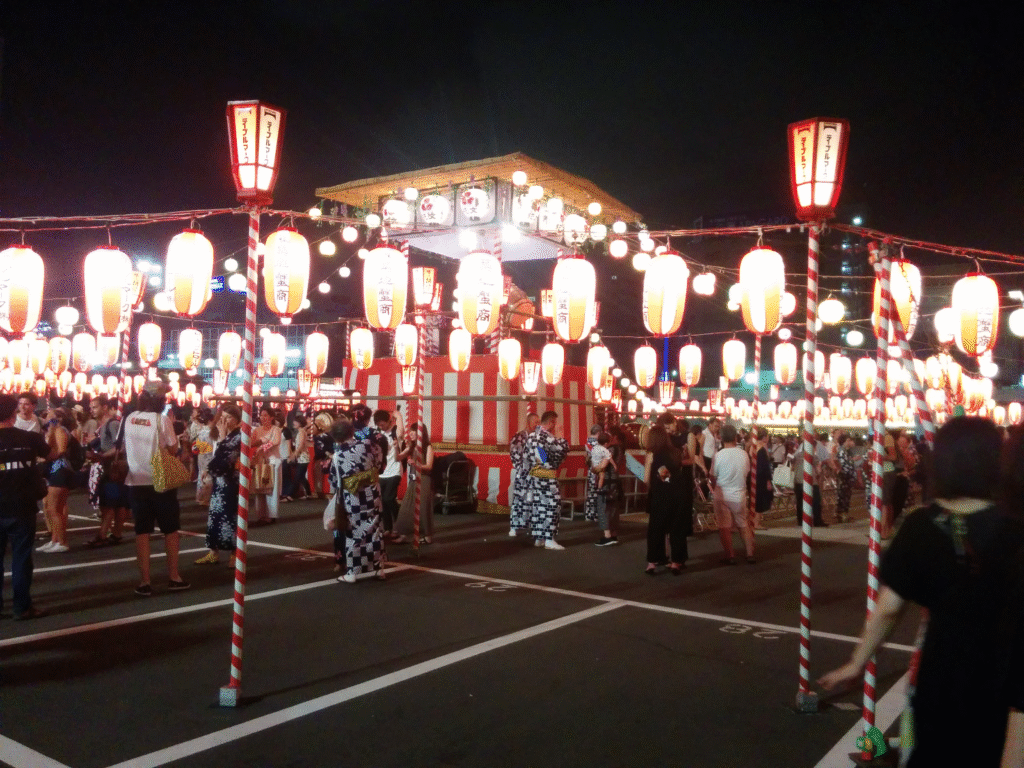
Lanterns glow against the Buddhist temple’s stone façade while stalls curated by neighbouring Tsukiji Market keep you fed with a wide variety of delicious foods.
- When: Jul 30 to Aug 2
- Official Website
- Map
Ebisu Station Bon Odori (Tokyo)
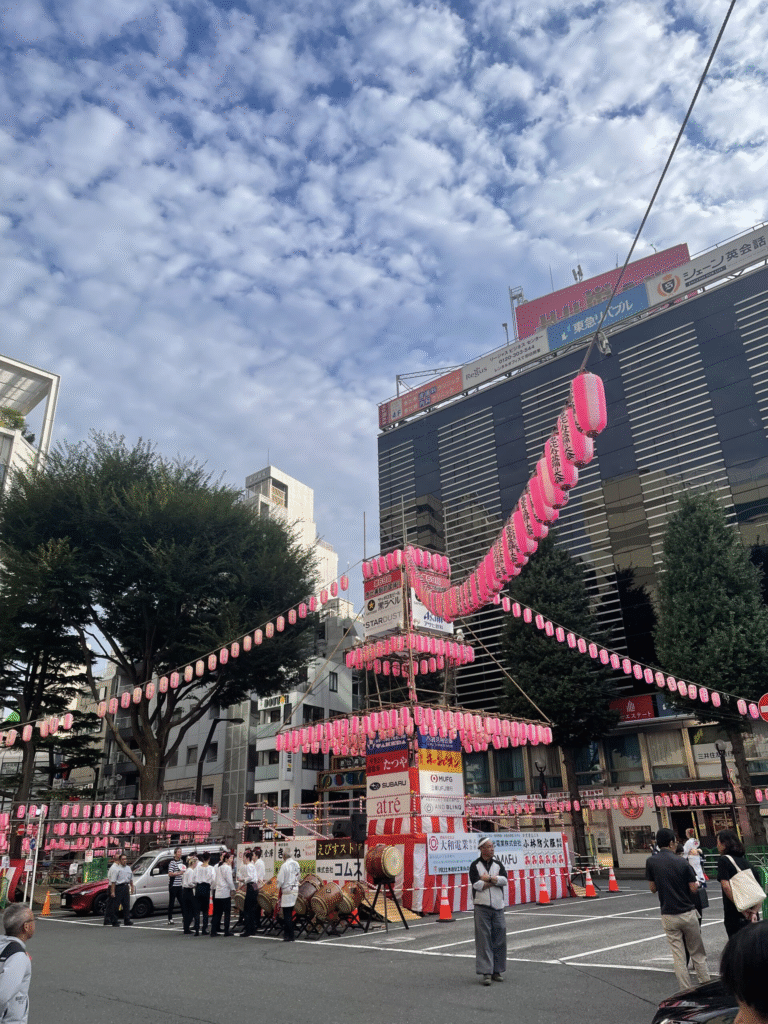
Step off the Yamanote Line and straight into a commuter-friendly dance circle surrounded by izakaya patios.
- When: Jul 25 to 26
- Official Website
- Map
Koenji Awa Odori (Tokyo)
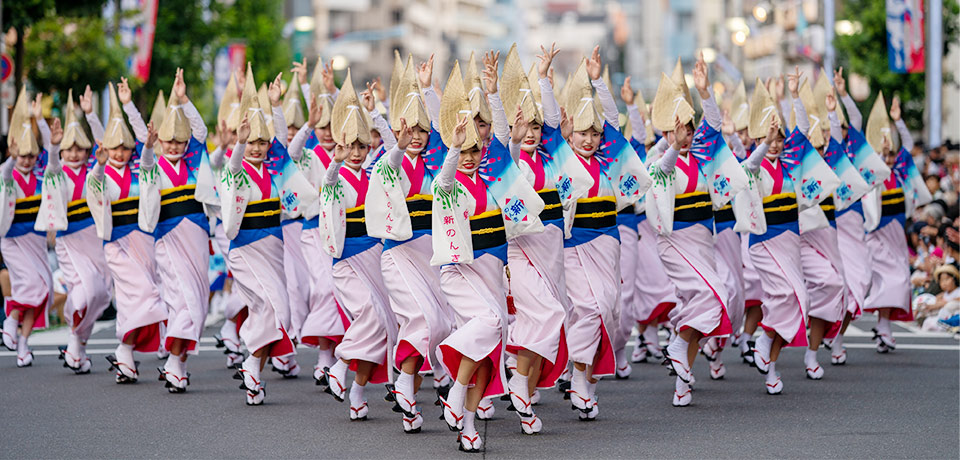
Twelve thousand dancers funnel past Koenji Station from 17:00. Arrive by 16:00 for a rail-side spot.
- When: Aug 23 to 24
- Official Website
- Map
Roppongi Hills Bon Odori (Tokyo)
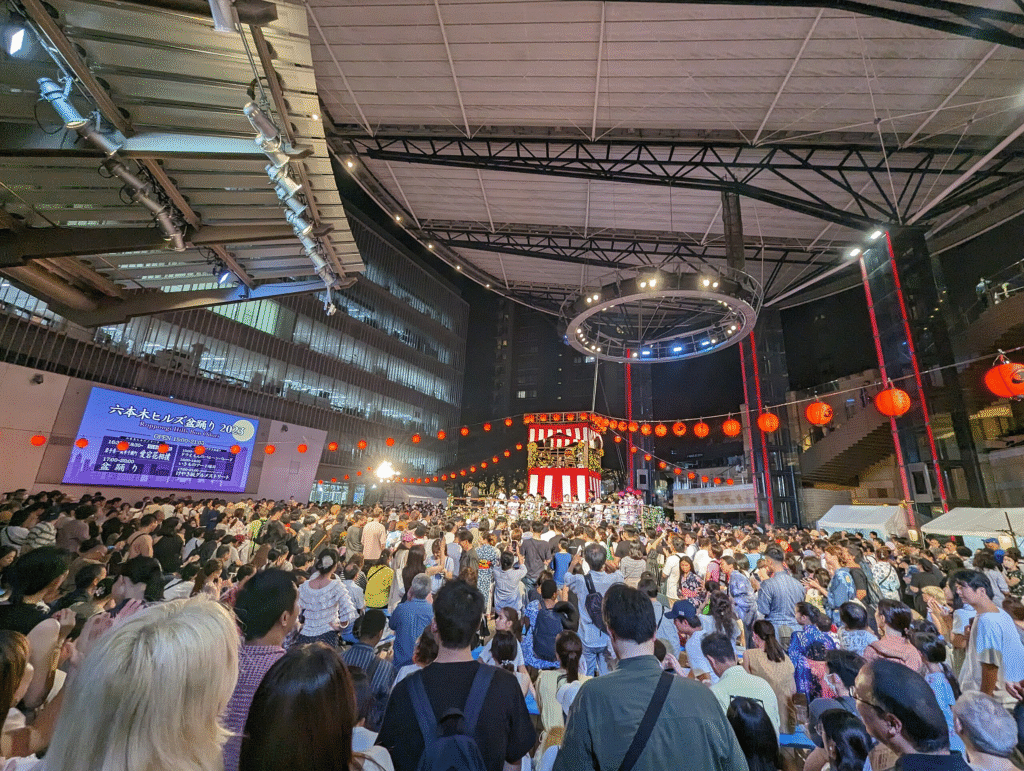
A skyline backdrop, craft-beer stands, and kids’ workshops make this an extremely expat-friendly choice.
- When: Aug 23 to 25
- Official Website
- Map
Hibiya Park Marunouchi-Ondo Bon Odori (Tokyo)
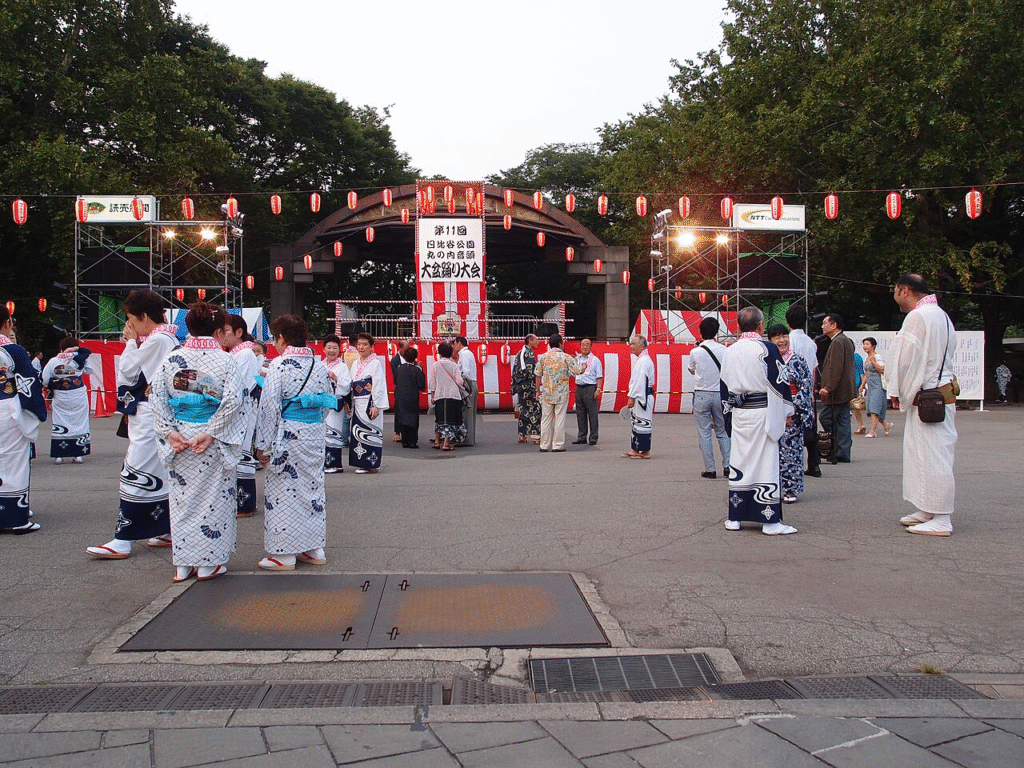
Office workers in yukata circle a lit fountain just a five minute walk from the Imperial Palace.
- When: Aug 25 to 26
- Official Website
- Map
Kinosaki Onsen Bon Odori (Hyōgo)
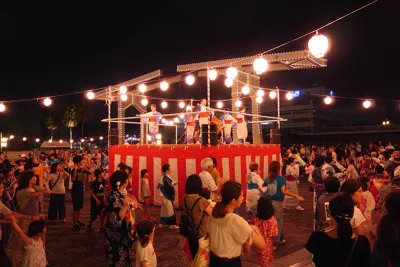
Dance in cotton yukata beside willow-lined canals, then resume the festivities in Edo-era streets the following night.
- When: Aug 14 to 15
- Official Website
- Map
Why Bon Odori Matters
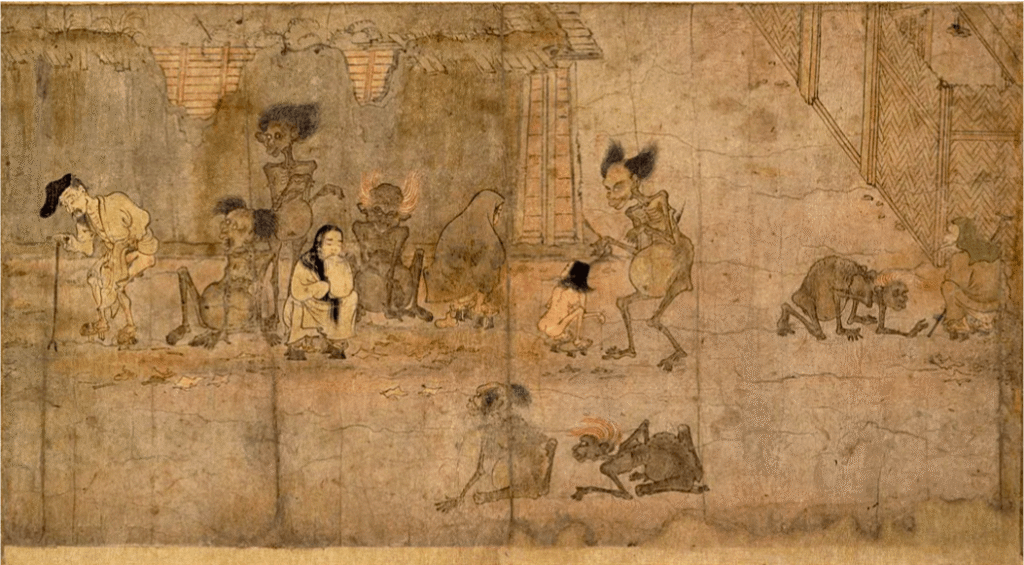
Every August the bass of taiko drums and the soft glow of chochin lanterns signal Obon, when ancestral spirits are welcomed home. Bon Odori, literally “Bon dance”, is the social heartbeat of the season. It evolved from 15th Century Buddhist nenbutsu-odori into today’s street party where anyone can join simply by copying the front row.
After WWII, the dances moved from temple precincts to rebuilt shopping streets, becoming symbols of community revival. In 2025, with inbound tourism fully restored and multiple festivals streaming tutorials online, newcomers can practice the moves long before they hear the first drumbeat.
Where to Dance in 2025
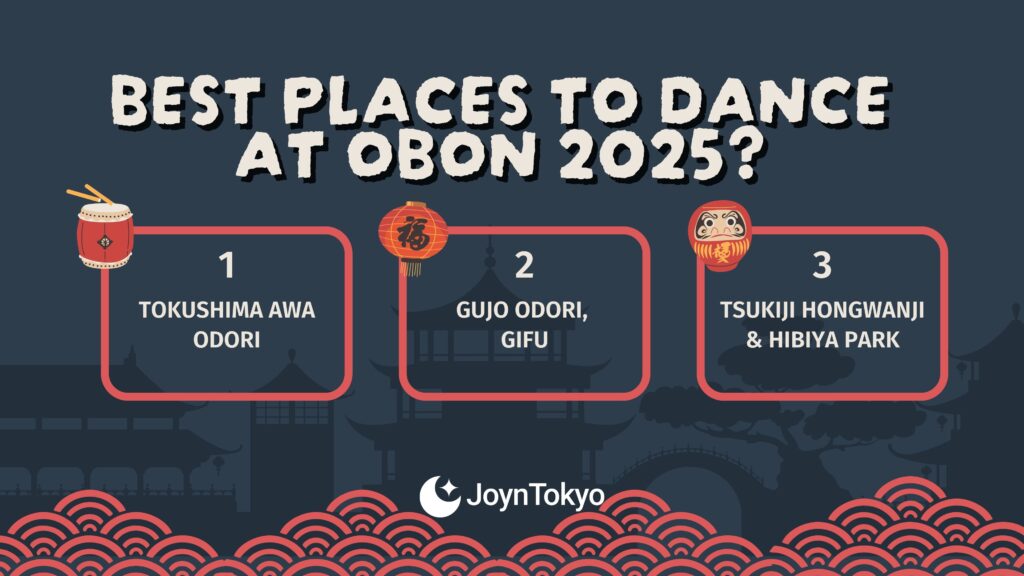
Tokushima Awa Odori, Shikoku’s Signature Spectacle
For five hot nights, more than 10,000 costumed troupers chant the playful refrain:
“Odoru ahō ni miru ahō — onaji ahō nara odoranya son son!”
(“Fools who dance and fools who watch — if we’re all fools, we’d better dance!”)
Grandstands guarantee a view, but mingling kerbside means you get to enjoy being pulled into the line.
Gujo Odori, Gifu: Japan’s Longest Summer Party
Running for an unrivalled 31 evenings, Gujo’s riverfront festivities all build to tetsuya-odori, four consecutive all-night sessions (Aug 13-16), when trains run late and cafés stay open until dawn. Cheap geta clogs double as percussive instruments, so—buy a pair on-site and tap along!.
Tokyo Two-Step: Tsukiji Hongwanji and Hibiya Park
From Jul30-Aug 2, Tsukiji Hongwanji’s forecourt becomes a lantern-lit dance stage as Edo-style melodies play through the night. With stalls managed by former -Tsukiji fishmongers, the seafood skewers are unbeatable.
At Hibiya Park (Aug 25-26) salary-workers unwind after work in pastel yukata. The circle around the fountain is beginner-friendly and finishes by 21:00 — perfect if you’re sightseeing on a tight schedule.
Urban Energy: Koenji & Roppongi Hills
Koenji’s Awa Odori (Aug 23-24) draws close to a million spectators over two evenings as eight parade routes criss-cross through narrow arcades. Because it can get so crowded, early arrival is essential. The after-party spills into vinyl bars and craft-beer stands until late.
Prefer breathing room? On the same weekend, Roppongi Hills is home to weekend rooftop photo spots, English MCs, and a children’s hour at 17:00.
Neighbourhood Gems: Ebisu and& Kinosaki
Celebrating its 70th anniversary, Ebisu Station Bon Odori (Jul 25-26) is the ultimate “just one more beer” festival. And its so close to the station, that as soon as you jump out of the gates, you’ll be dancing!.
Kinosaki Onsen’s single-night event (Aug 14) invites guests in yukata rented from a local ryokan. A shuttle links the venue with Izushi’s castle-town dance the next night, making a perfect two-day side-trip from Kyoto.
How to Join In — No Experience Required
Dress the Part
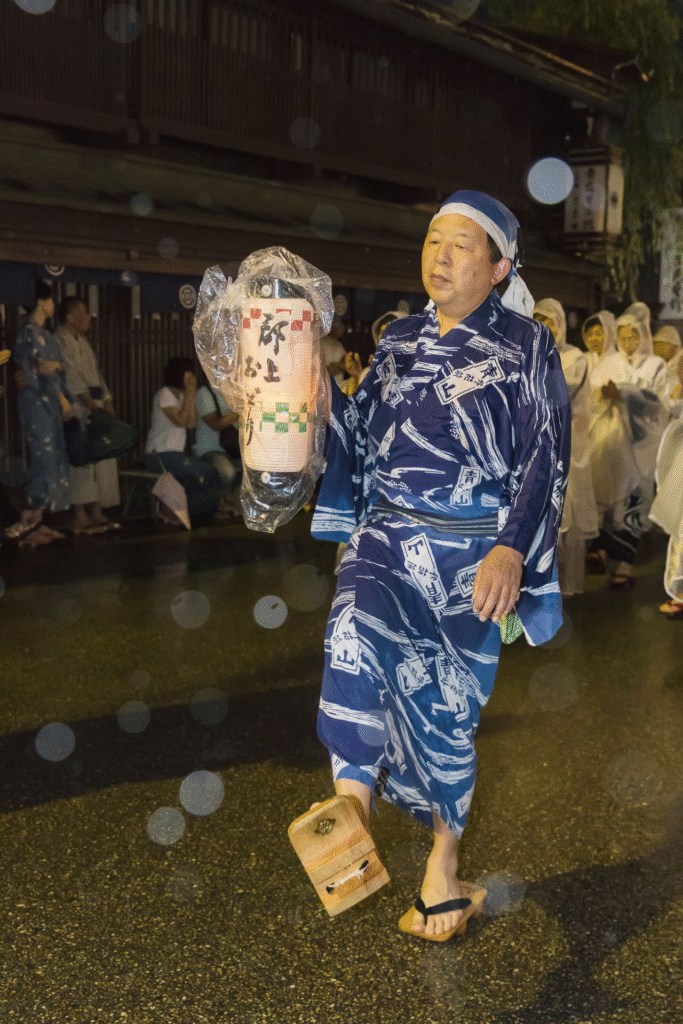
Renting a cotton yukata (around ¥4,000) usually includes a simple obi (sash) and geta (Japanese wooden clogs). Tie your hair up, slip a sensu folding fan into the obi, and you’re ready.
Learn the Steps
Most dances follow an eight-beat cycle: step, step, clap twice, turn, repeat. Try to arrive at least 30 minutes early, as local volunteers often run a free mini-lesson. If you freeze, smile and copy your neighbour — nobody is judging!
Eat, Drink, and Stay Cool
Cash is still king at food stalls. Expect yakitori (¥200), shaved-ice kakigōri (¥400), and, at larger venues, micro-brew beers (¥700). Vegetarians should look for yasai-kushi skewers. Tokyo’s August days hit 35 °C with 80 percent humidity, so carry a refillable bottle (public fountains are plentiful) and apply insect repellent at riverside venues.
Bon Odori FAQ
- Tickets? Only grandstand seats at Tokushima and reserved tatami at Gujo require advance purchase (on sale from May).
- Kids welcome? Yes. Most big festivals schedule early-evening kid circles with slower music.
- English support? Major city events offer bilingual signs and staff. For rural sites, memorizse “Ikke-issa” (“one more round!”) to break the ice.
- Rain plan? Light showers rarely cancel dances, though; heavy rain can shifts smaller events to covered gymnasiums. Check the organizsers’ X (Twitter) feeds on the day.
Whether you spin under neon lanterns in Tokyo or tap clogs until sunrise in Gifu, Bon Odori 2025 iis the perfect chance to be a part ofnvites you into Japan’s living summer tradition. Listen for the distant drums, step into the circle, and discover a festival where language barriers melt away into thea shared beat —ofyour first real dance as a local in your Japanese community.


